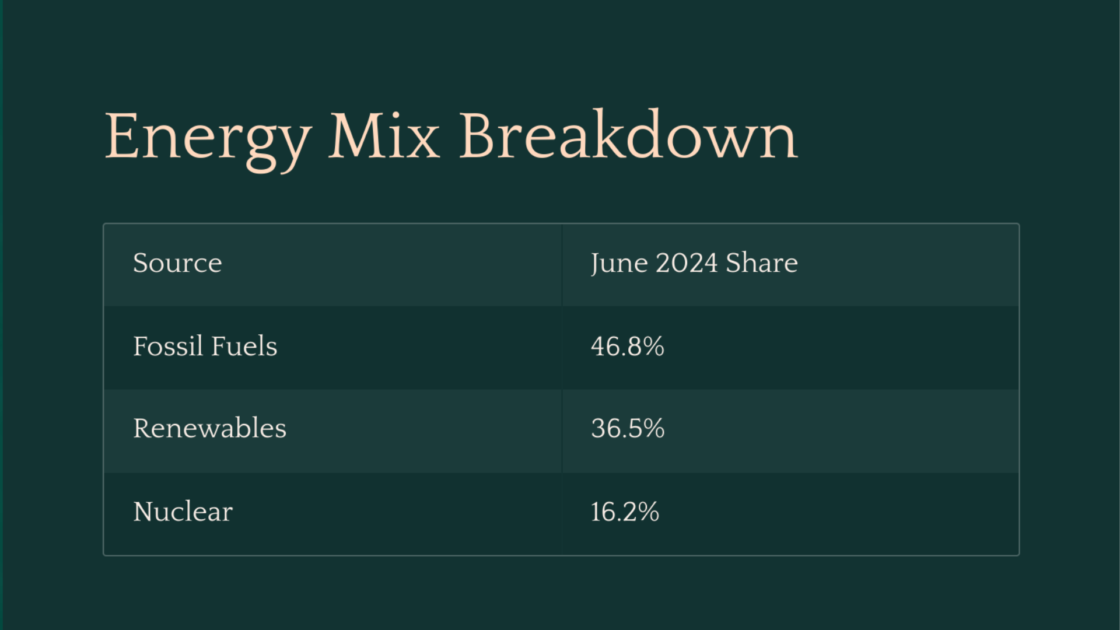OECD net electricity production rises 5.4% in June 2024

According to the latest release from the International Energy Agency (IEA), total net electricity production in the Organisation for Economic Co-operation and Development (OECD) countries reached 902.8 TWh in June 2024, reflecting a 5.4% year-on-year (y-o-y) increase. On a year-to-date basis, electricity production in the first two quarters of 2024 rose by 2.9%. The OECD consists of 38 member countries, including major economies such as the United States, Japan, Germany, and Australia, working to promote economic growth and stability.
Electricity generation from fossil fuels amounted to 422.7 TWh in June, representing a 0.6% decline compared to the same period in 2023. This decline was most pronounced in OECD Europe (-12.9% y-o-y), largely due to a significant drop in natural gas generation (-21.0%). However, fossil fuel generation increased in the OECD Americas by 3.8%, driven by coal (+4.5%) and natural gas (+3.2%). Fossil fuels contributed 46.8% of the OECD’s electricity mix.
Renewable energy sources saw significant growth, with total production reaching 329.9 TWh in June 2024, a 14.0% increase y-o-y. This was fueled by strong growth in wind (+28.1%), solar (+18.4%), and hydro (+4.8%) power. The OECD Americas led the rise in renewable generation, growing by 17.5% y-o-y, with wind and solar playing a major role. Renewables accounted for 36.5% of the OECD’s electricity mix in June.
Nuclear electricity production also saw a 6.0% increase y-o-y, reaching 146.5 TWh in June 2024, driven by higher generation across all OECD regions, notably in France (+16.0%) and the United States (+5.0%). Nuclear power contributed 16.2% to the OECD’s total electricity production.
